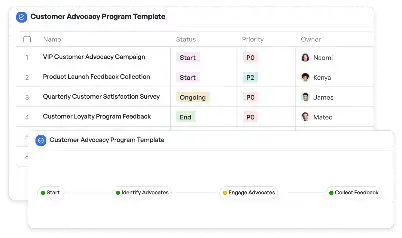Confidence Score Threshold Guide
Achieve project success with the Confidence Score Threshold Guide today!

What is Confidence Score Threshold Guide?
The Confidence Score Threshold Guide is a comprehensive framework designed to help teams and organizations set, evaluate, and optimize confidence score thresholds in various applications. Confidence scores are critical in fields such as machine learning, data analytics, and decision-making processes, where they represent the likelihood of a prediction or outcome being accurate. This guide provides structured methodologies to determine the optimal threshold for confidence scores, ensuring that decisions are both reliable and actionable. For example, in fraud detection systems, setting the right confidence score threshold can significantly reduce false positives while maintaining high detection rates. By leveraging this guide, teams can align their confidence score thresholds with specific business goals, industry standards, and operational requirements.
Try this template now
Who is this Confidence Score Threshold Guide Template for?
This Confidence Score Threshold Guide template is ideal for data scientists, machine learning engineers, quality assurance teams, and business analysts who work in industries such as finance, healthcare, e-commerce, and technology. Typical roles include fraud detection specialists, predictive analytics professionals, and quality control managers. For instance, a data scientist working on a machine learning model for customer segmentation can use this guide to set confidence score thresholds that balance precision and recall. Similarly, a quality assurance team in manufacturing can apply the guide to determine acceptable thresholds for product defect detection, ensuring compliance with industry standards.

Try this template now
Why use this Confidence Score Threshold Guide?
Using the Confidence Score Threshold Guide addresses specific pain points such as inconsistent decision-making, high false positive rates, and lack of standardization in threshold settings. For example, in fraud detection systems, a poorly set confidence score threshold can lead to either excessive false positives, which waste resources, or missed fraud cases, which result in financial losses. This guide provides actionable steps to calibrate thresholds based on historical data, business objectives, and risk tolerance. Additionally, it helps teams document and standardize their threshold-setting processes, making it easier to replicate success across projects and adapt to changing requirements. By using this guide, organizations can ensure that their confidence score thresholds are both scientifically sound and practically effective.

Try this template now
Get Started with the Confidence Score Threshold Guide
Follow these simple steps to get started with Meegle templates:
1. Click 'Get this Free Template Now' to sign up for Meegle.
2. After signing up, you will be redirected to the Confidence Score Threshold Guide. Click 'Use this Template' to create a version of this template in your workspace.
3. Customize the workflow and fields of the template to suit your specific needs.
4. Start using the template and experience the full potential of Meegle!
Try this template now
Free forever for teams up to 20!
The world’s #1 visualized project management tool
Powered by the next gen visual workflow engine




